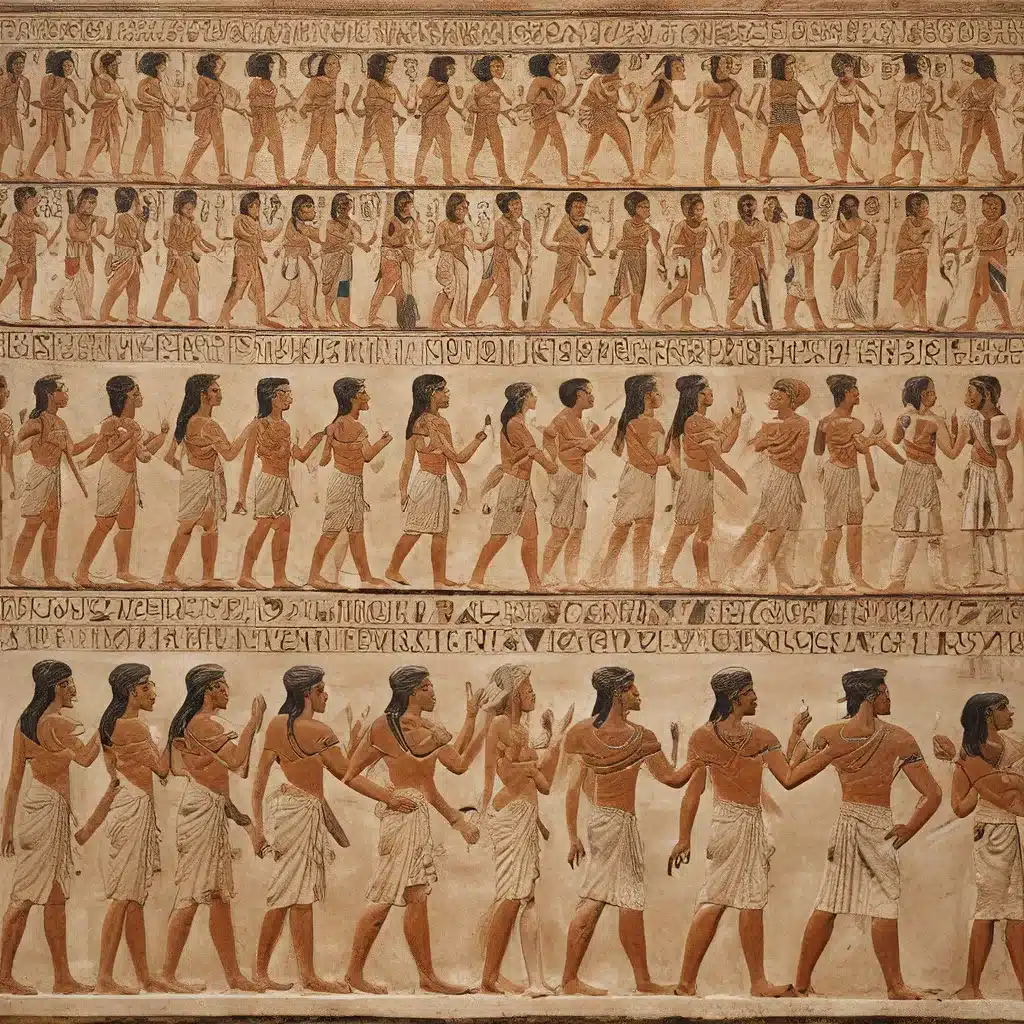
Exploring the Origins and Spread of Uralic Languages
The ancient world was a tapestry of diverse cultures, each with its own rich linguistic heritage. One such language family that has captivated scholars for centuries is the Uralic languages, which span a vast territory from the Baltic Sea to the Taymyr Peninsula in Siberia. Uralic languages are believed to have originated thousands of years ago, with their Proto-Uralic ancestor potentially taking root in the watersheds of the Volga, Oka, and Kama rivers.
The Lost Kingdoms delves into the fascinating history and evolution of these linguistic groups, shedding light on the intricate patterns of migration, cultural exchange, and genetic admixture that shaped the Uralic-speaking populations across Eurasia.
One of the key aspects of the Uralic language family is its remarkable diversity, encompassing approximately 40-50 distinct languages, including the Finno-Ugric and Samoyed branches. These languages are believed to have gradually spread across the region, with the Finno-Ugric precursors moving westward towards the Baltic Sea, the Proto-Saami heading north-west, and the Proto-Permian branch remaining in the Volga area. Meanwhile, the ancestors of the Ugric and Samoyed languages, including Khanty, Mansi, and Hungarian, are thought to have descended from the easternmost varieties of the Uralic proto-languages.
Tracing the Genetic and Cultural Landscape
The spread of Uralic languages has long been a topic of intense debate among linguists and archaeologists, with various theories linking their expansion to the diffusion of specific material cultures, such as the Neolithic Combed Ware, Volosovo, Sejma-Turbino, and Netted Ware cultures.
Recent advances in ancient DNA analysis have shed new light on the genetic history of Uralic-speaking populations, revealing complex demographic processes that may have accompanied the linguistic diversification. While mitochondrial DNA studies have shown that the distribution of Western and Eastern Eurasian genetic components among Uralic speakers is largely determined by geography, the Y-chromosomal data paints a different picture.
Remarkably, up to one-half of the male lineages among Uralic speakers in Europe belong to the pan-North Eurasian haplogroup N3a, which is closely related to lineages found in Siberian and East Asian populations. This stark contrast between maternal and paternal genetic profiles suggests that the spread of Uralic languages may have involved a significant demic component, with male-biased gene flow from East Eurasia playing a crucial role.
Autosomal Insights into Uralic Genetic Ancestry
To further explore the genetic underpinnings of Uralic linguistic diversity, researchers have conducted comprehensive genome-wide analyses of 15 Uralic-speaking populations, covering the main branches of the language family. These studies have revealed intriguing patterns of genetic affinity and shared ancestry among Uralic speakers.
The principal component analysis of autosomal data shows that the genetic diversity of Uralic-speaking populations largely corresponds to their geographic distribution, with these groups clustering alongside speakers of other language families, such as Slavic and Turkic. This suggests that geography has been a primary determinant of genetic affinities in the region.
However, a deeper dive into the data reveals a distinct ancestry component that is shared among most Uralic speakers, particularly those in the Volga-Ural region and the Saami of Fennoscandia, who draw up to 30% of their genetic makeup from this component. This finding, combined with the observed excess of shared identity-by-descent segments among distant Uralic speakers, points to a common genetic substrate that may have been shaped by ancient population movements and interactions.
Correlating Genes and Languages
To further understand the relationship between genetic and linguistic diversity among Uralic-speaking populations, researchers have employed statistical techniques, such as Mantel tests and partial Mantel tests, to investigate the correlations between genetic, linguistic, and geographic distances.
The results indicate a clear and significant association between autosomal genetic distances and lexical distances, even after accounting for the effects of geographic proximity. This suggests that the spread of Uralic languages was accompanied by the dispersal of shared genetic ancestry, reflecting a co-evolution of genes and languages in the region.
Interestingly, this correlation is not as pronounced when considering the uniparental genetic markers, such as mitochondrial DNA and Y-chromosomal data. This may be due to the higher susceptibility of these haploid loci to the effects of genetic drift, masking the more recent signals of shared ancestry that are better captured by the autosomal genome.
Unraveling the Genetic Ties and Linguistic Divergence
The study of Uralic-speaking populations has revealed a complex and multifaceted history, with linguistic and genetic evidence painting a nuanced picture of their origins and dispersal across Eurasia. While geography has played a significant role in shaping the genetic landscape of these groups, the data also points to the existence of a common genetic substrate that may have accompanied the spread of Uralic languages.
Interestingly, the genetic ties among Uralic speakers do not always align with their linguistic affiliations. For example, Hungarians and Estonians, despite their close linguistic relationship within the Finno-Ugric branch, do not display a clear genetic distinction from their non-Uralic-speaking neighbors.
Conversely, the Saami of Fennoscandia, who are linguistically related to other Uralic speakers, display a strong genetic affinity with Siberian populations, potentially due to their isolated position and closer contacts with the Arctic communities on both sides of the Ural Mountains.
These findings underscore the complex interplay between cultural, linguistic, and genetic factors in shaping the diversity of human populations, and highlight the importance of integrating multiple lines of evidence to unravel the intricate histories of ancient civilizations.
As researchers continue to uncover new insights into the genetic and linguistic legacies of Uralic-speaking groups, the story of their origins and migrations will undoubtedly become more nuanced and multifaceted, offering valuable lessons about the dynamic nature of human societies and the factors that drive their evolution over time.


